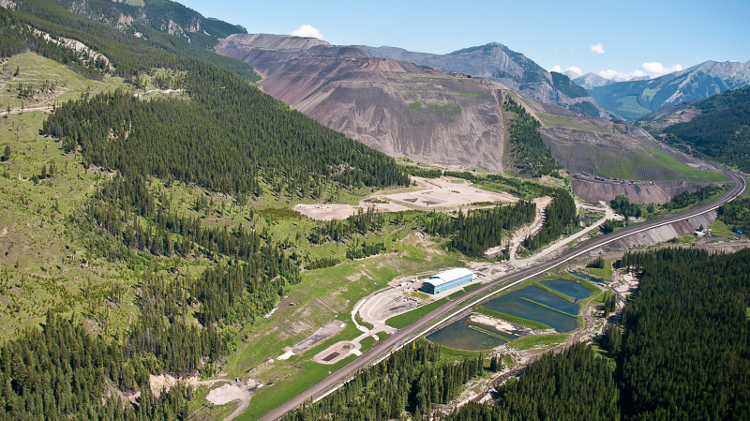Sampling trenches criss-cross the Nucleus deposit on Triumph Gold's Freegold Mountain project in Yukon Territory. Courtesy of Triumph Gold
When Goldcorp invested in Triumph Gold in March, the location of the junior miner’s Freegold Mountain was one of its appealing features.
The project is located near the Coffee project south of Dawson City, Yukon, which Goldcorp picked up when it acquired Kaminak Gold last year. “This gives us some exploration leverage in what we believe to be a very prospective but early-stage exploration district,” said Paul Harbidge, a geologist and Goldcorp’s new senior vice-president of exploration.
With the 19.9-per-cent investment from Goldcorp, Triumph will start its 2017 summer drill program in June at Freegold Mountain, where it has already identified more than 20 mineralized zones at the Revenue and Nucleus porphyry deposits since it acquired the project in 2006. Triumph has an initial 13,000 metres planned around four new exploration targets.
While First Nations and territorial government negotiate, more than half of Yukon off-limits to prospectors
The stake in Triumph is just one example of Goldcorp’s new greenfields exploration strategy of partnering with juniors to grow its gold reserves through exploration partnerships, something company president and CEO David Garofalo discussed during his keynote address to the annual AME BC Roundup conference in Vancouver in January. “We’re good at mining, but the exploration game is an entirely different risk profile and set of skills,” he said. “Our partnerships with juniors who conduct that exploration are invaluable to us. It feeds our pipeline.”
The directive falls within the company’s 20/20/20 Strategy, announced in January. Over the next five years, Goldcorp plans to increase production, drive down all-in sustaining costs and grow gold reserves, all by 20 per cent.
Harbidge is in charge of increasing prospectivity at existing exploration camps and searching for new opportunities. “We have a portfolio of 164 targets and a budget of $100 million for brownfields exploration,” said Harbidge, “while our greenfields strategy is to look at companies in the right geological jurisdictions who have the right technical teams with the ability to make discoveries that meet Goldcorp’s criteria.”
Goldcorp is currently investing in junior companies located in areas with large, multi-deposit mineral potential and has prioritized North and South America for geological and logistical reasons. But projects in the Goldcorp pipeline are assessed beyond their address. The company is looking to “invest in people as much as properties,” said Garofalo.
Another example of Goldcorp’s approach is the investment the company made in Auryn Resources in January. Harbidge was impressed by the company’s portfolio of projects in favorable geological jurisdictions, including Nunavut, British Columbia, and Peru.
“But what also attracted me to them was their technical team and their exploration methodology,” said Harbidge. “The way they were undertaking their work was exactly how I like to undertake it. I felt they were a very competent team.”
Auryn’s executive chairman, Ivan Bebek, felt the same way. “We chose to partner with Goldcorp because of the favourable terms that were achieved and the familiarity they have with the three jurisdictions that we are working in,” he said.
Since receiving funding from Goldcorp in January, Auryn initiated fieldwork for a 25,000-metre drill program at the Committee Bay project in Nunavut, with further plans for drilling at its Homestake project in B.C. and at the company’s Peruvian projects later in the year.
Junior explorers like Auryn and Triumph recognize that Harbidge and his technical team are looking for projects, people and properties that meet a longer list of criteria.
“Goldcorp is not like an investor looking to make a quick return and flip the stock,” said John Anderson, Triumph’s chairman. “They know that finding and developing a mine takes time and they are investing in opportunities with the ability to grow through exploration into district scale potential.”
Anderson said he appreciates that the company “shares ideas with us, rather than directing us in our activities.”
Goldcorp is relying on exploration success to meet the target of increasing gold reserves to 50 million ounces in 2021, up from 42.8 million ounces in June 2016.




